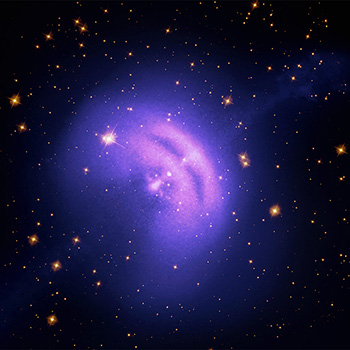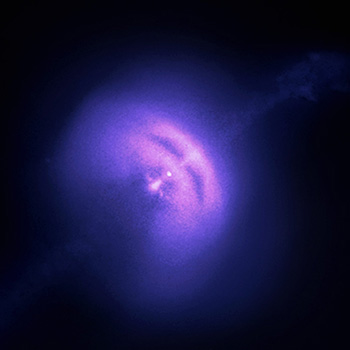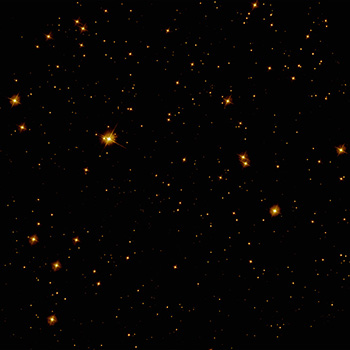
Vela Pulsar Sonification
The Vela Pulsar data has also been converted to sound through a process called data sonification. In this sonification, listen to a radar-like scan, clockwise from 12:00 of the image. Brightness is mapped to volume. Distance from the center is mapped to pitch (farther away is higher pitch). For the Chandra X-ray data, the bright inner region (violet) is mapped to a low synth sound, with 11 Hz oscillations matching the period of the pulsar. The dimmer outer region (blue) and jet are mapped to a wind-like sound. A long upper jet can be heard around 4 seconds in, and a bright, but much shorter lower jet can be heard around 20 seconds. For the Hubble optical data, the stars are mapped to notes on a plucked-type synth (where brighter stars are louder, and stars farther from the center are higher pitched).
Access more information & file formats on this sonification
The Chandra sonifications were led by the Chandra X-ray Center (CXC), with input from NASA's Universe of Learning. The sustained collaboration was driven by visualization scientist Dr. Kimberly Arcand (CXC), astrophysicist Dr. Matt Russo and musician Andrew Santaguida (both of the SYSTEM Sounds project). For other sonifications, please see their linked pages.
cxcpub@cfa.harvard.edu
617-496-7941
60 Garden Street,
Cambridge, MA 02138 USA
Art Direction/Design: Kristin DiVona
Web Developers: Khajag Mgrdichian
& Kelly T.S. Williamson
Chandra X-ray Center, Operated for NASA by the Smithsonian Astrophysical Observatory. This site was developed with funding from NASA under contract NAS8-03060 | Privacy | Accessibility
Additional support from NASA's Universe of Learning (UoL). UoL materials are based upon work supported by NASA under award number NNX16AC65A to the Space
Telescope Science Institute, working in partnership with Caltech/IPAC, Jet Propulsion Laboratory, and Smithsonian Astrophysical Observatory.



